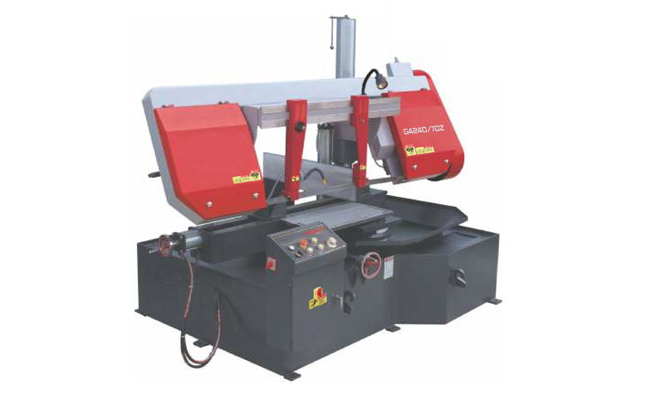HS7150 Hydraulic Hack Saw
Cutting Capacity :
Subtitle: How to Choose, Use, and Maintain the Perfect Band Saw for Your Metalworking Projects
When working with structural materials like angle bars, steel plates, pipes, and beams, precision cutting is non-negotiable. A dedicated metal band saw is the cornerstone of an efficient and safe workshop. This guide breaks down everything you need to know about selecting and operating the right band saw for these demanding tasks.
Unlike abrasive chop saws or plasma cutters, a band saw uses a continuous toothed blade for a clean, precise, and cool cut. This is critical for maintaining the integrity of metals and achieving a finish that often requires no further grinding. For repetitive cuts on various profiles, it is unmatched in efficiency and accuracy.

Choosing the right saw can be overwhelming. Focus on these critical features:
| Feature | Why It Matters | What to Look For |
|---|---|---|
| Cutting Capacity (Round & Rectangular) | Determines the maximum size of material you can cut. | > 7″ round capacity for large pipes and beams. Check both vertical and horizontal capacity. |
| Blade Type & TPI (Teeth Per Inch) | Affects cut speed, finish, and material type. | Variable TPI (3/4 to 10/14) blades. 3-4 TPI for thick beams/plates, 10-14 TPI for thin-walled pipes. |
| Power & Speed Control | Provides the torque for hard metals and control for soft ones. | > 1 HP motor, variable speed control to adjust for different metals (e.g., steel vs. aluminum). |
| Vise & Clamping System | Secures material for accurate, safe, and repeatable cuts. | Robust, multi-directional vise that can firmly hold angle iron, pipe, and irregular shapes without slipping. |
| Coolant System | Extends blade life and improves cut quality by reducing heat. | Integrated coolant system is a major advantage for high-volume production cutting. |
| Portability & Stability | Important for job sites or smaller shops. | Heavy-duty base to reduce vibration, with optional wheels for mobility. |
Always prioritize safety: wear safety glasses, gloves, and hearing protection.
Setup: Ensure the saw is unplugged. Install the correct blade (low TPI for thick materials, higher TPI for thin-walled pipes to prevent snagging).
Adjust Speed: Set the blade speed according to the material. Slower for harder metals.
Measure and Mark: Clearly mark your cut line on the workpiece.
Secure the Material: This is crucial for accuracy.
Angle Bar: Clamp in the vise so the blade cuts through two sides at once for a clean mitre.
Steel Plate: Ensure it is flat and fully supported on the base to prevent vibration.
Pipe & Beam: Use the vise to clamp directly on a solid section to avoid collapsing or deforming the material.
Make the Cut: Start the saw, let it reach full speed, and feed the material into the blade with steady, moderate pressure.
Complete the Cut: Allow the cut piece to fall safely away from the blade. Never force material back through a running blade.
Versatility: One machine handles angle iron, flat bar, rebar, pipe, tubing, and beams.
Accuracy: Delivers straight, burr-minimized cuts for perfect welds and fittings.
Efficiency: Cuts multiple pieces simultaneously when stacked, saving immense time.
Material Savings: The thin blade creates very little kerf (waste), preserving more of your expensive metal stock.
Durability: A well-maintained band saw is a long-term investment that will last for decades.
Perform these simple tasks to ensure longevity and performance:
Check Blade Tension and Tracking: Before every use.
Lubricate Moving Parts: Follow the manufacturer’s schedule.
Inspect Blades for Wear or Damage: Look for broken or worn teeth.
Clean Chips and Debris: Use a brush after each session to keep the guide and wheels clean.
Top Up Coolant: If your model has a system, check fluid levels regularly.
Cutting Capacity :
Cutting Capacity :